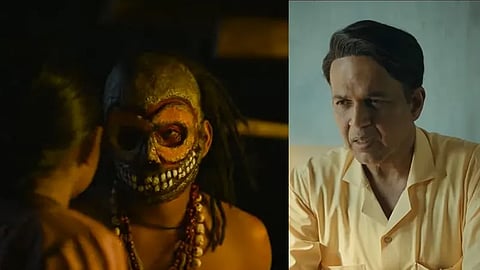

Manvat Murders Real Story, Manvat Murders True Story: The much-awaited Marathi crime thriller Manvat Murders was released on Sony Liv on October 4, 2024. Ever since its release, Manvat Murders has been buzzing among fans as they were early waiting to watch more content just like Sector 36. Directed by Ashish Avinash Bende, Manvat Murders is a crime thriller that features actors like Ashutosh Gowariker, Sai Tamhankar, Makarand Anaspure, Sonali Kulkarni, Kishor Kadam, Mayur Khandge and more in the leading roles. Talking about Manvat Murders Real Story, Manvat Murders is based on real-life CID officer Ramakant S. Kulkarni’s autobiography titled Footprints on the Sand of Crime and the investigation done by then-on-duty officials.
As shown in the trailer, Manvat Murders revolves around a series of murders that took place in a Maharashtra village named Manwat between 1972 and 1974. Talking more about Manvat Murders True Story, it revolve around serial brutal murders of women and girls in the village. As per a Supreme Court judgment, Manwathad only 15,000 population in 1977. The woman and minor girls were brutally murdered with the help of an axe. Manvat Murders also showcased how the crime were linked to superstition, and treasure hunts that ultimately led to human sacrifices and murder of innocent women and girls. As per reports, the murders were done as part of a plot to locate a treasure trove.
Since the case took place in 1970s in Maharashtra, most of the information is available on legal websites. A Supreme Court judgment headnote on the case reads, "Accused, No. 1 though in her thirties had entered a period of premature menopause. She was anxious to get a child which could only happen if her menstrual cycle was restored. She used to consult quacks and Mantriks in order to help get a child. Accused No.1’s mother was accredited with sixth sense in the matter of discovery of treasure trove. She had oracled that a treasure trove lay buried I in accused No. 1’s house underneath the Pimpal tree.
The Pimpal tree is believed to be the haunt of Munjaba, who is supposed to be the spirit of an unmarried Brahmin boy. Accused NOs. 1 and 2 consulted quacks who prescribed that virgins should be offered as sacrifice to Munjaba and to propitiate the deity, blood from their private parts be sprinkled on the food offered by way of ’Naivedya’. Five small girls about 10 years of age, a year-old infant and. 4 women in their mid-thirties were found murdered between 14-11-1972 and 4-1-1974 in a village called Manawat.
The murders of these 10 females showed significant similarities in pattern and conception. The time and place chosen for crime, preference for females as victims, the nature of injuries caused to them, the strange possibility that the private parts of some of the victims were cut in order to extract blood, the total absence of motive for killing these very girls and women, the clever attempt to dodge the police and then to put them on a false scent and the extreme brutality surroundings the crimes gone to the case an eerie appearance. Eighteen persons were put up for trial before the Session Judge for the 10 murders."